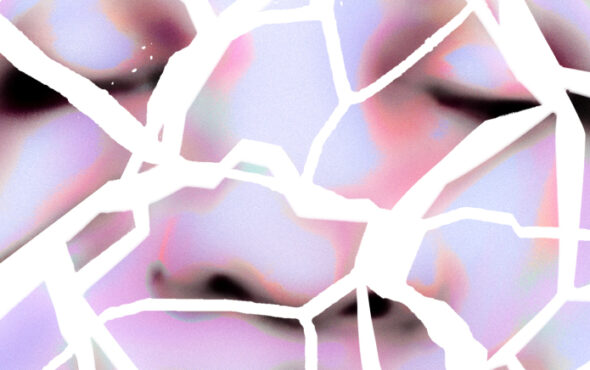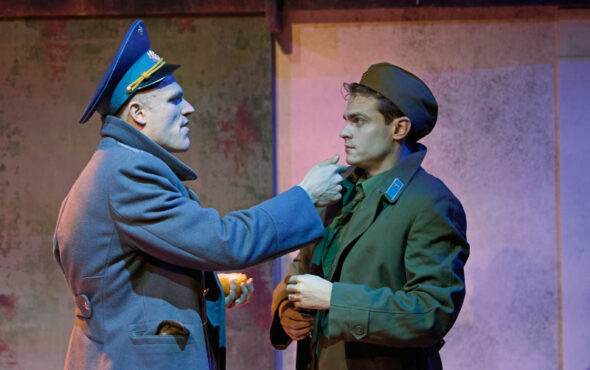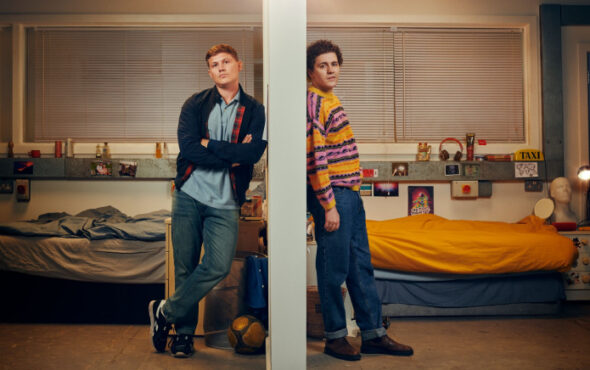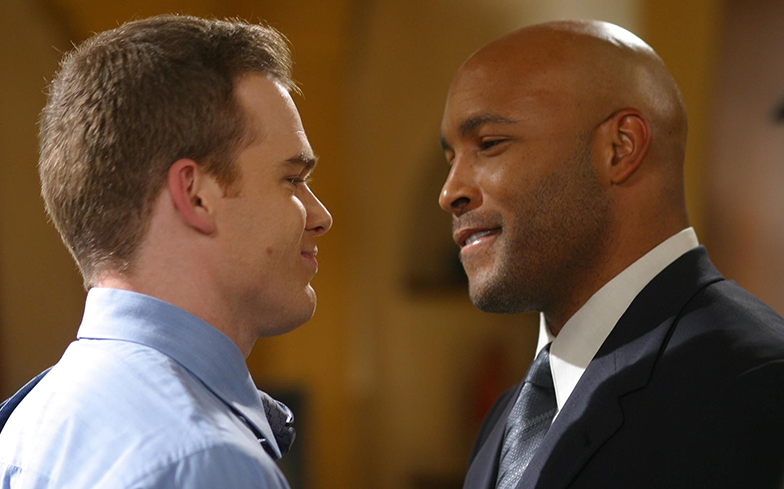
Queer love on TV has come a long way.
While mainstream film is still lacking in LGBTQ representation, television has long been a vehicle for providing fully-realised queer characters and the relationships they share – in fact, a recent study from GLAAD found that the number of LGBTQ characters on primetime television is at an all-time high, with 10.2% being part of the community.
From Buffy’s Willow and Tara, the first long-term lesbian relationship on US television, through to Pray Tell and Ricky on Pose, who became the first gay, HIV-positive black men to share a love scene, these are the queer love stories that have changed hearts and minds over the last three decades.
Scott and Leon – Roseanne (1995)
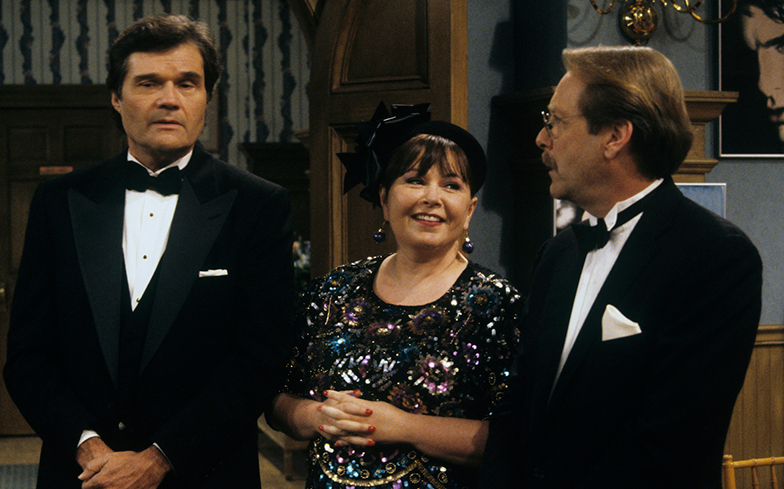
Roseanne Barr has been a controversial figure as of recent, thanks to her unflinching devotion to Donald Trump and the Republican party and racist Twitter comments about a former Obama official, but her television show did provide a landmark moment for queer representation: the first ever gay wedding on American television. In the show’s eighth season, recurring characters Scott (Fred Willard) and Leon (Martin Mull) tie the knot in the gayest way possible – with strippers and drag queens. However, the episode was moved from its 8pm time slot to 9.30pm, with an ABC spokesperson stating the “adult humour in this episode was more appropriate for the later time period”. Barr later proposed a spin-off for the two characters (with RuPaul) but the network didn’t accept the series, reportedly because having a sitcom with gay characters was considered too much of a ‘risk’.
Susan Bunch and Carol Willick – Friends (1995)
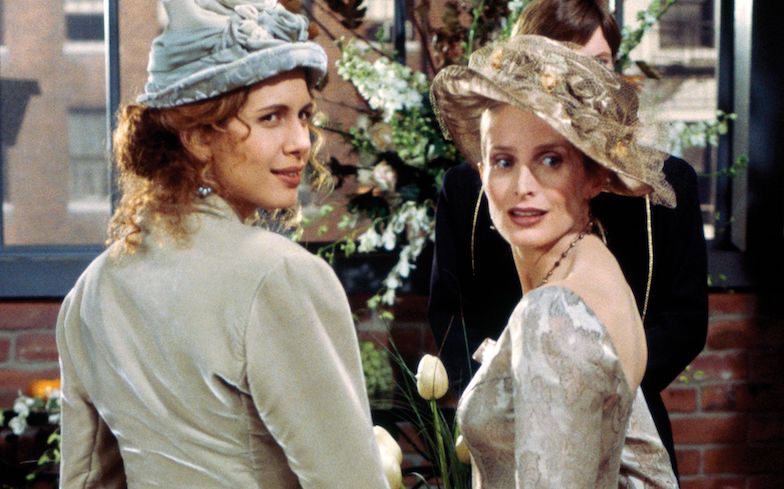
Roseanne may have beaten Friends to the punch by airing the first same-sex wedding five weeks prior, but the nuptials between Susan Bunch (Jessica Hecht) and Carol Willick (Jane Sibbett) was groundbreaking in its own right because it was the first lesbian wedding ever broadcast. Although the episode refused to air a simple kiss between the two, it’s important to acknowledge that the wedding occurred on one of the most popular television shows of all time. And to this day, the episode – titled The One With The Lesbian Wedding – is one of the most watched television episodes in history with over 31 million viewers. “It was just these two women who were in love, who had a balance between the two of them and were so devoted to each other,” Hecht reflected last year. “And I think that was ahead of its time.” Friends may have not aged well when it comes to the LGBTQ community (the misgendering of Charles Bing, Chandler exhibiting ‘gay panic’ traits and… Ross), but it did provide us with a landmark moment for queer women.
Willow Rosenberg and Tara Maclay – Buffy the Vampire Slayer (2000)
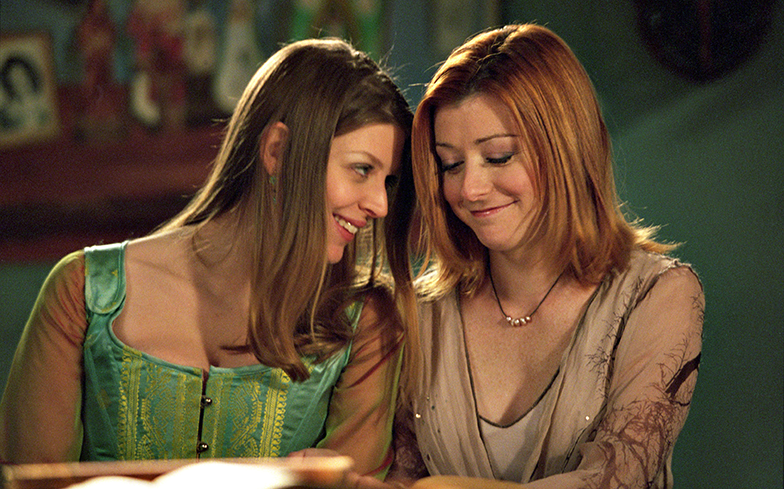
Since its run on television, Buffy the Vampire Slayer has received international recognition for the relationship between its resident witches Willow Rosenberg (Alyson Hannigan) and Tara Maclay (Amber Benson). Although 23 television shows included a gay character in 2000, a large majority were not portrayed as overly queer and weren’t featured in any affectionate same-sex scenes (even Will & Grace), because… homophobia! However, Willow and Tara made history by becoming the first long-term lesbian relationship on US television, and were lauded for normalising the queer experience. When Willow realises her feelings for Tara in season four, there’s no ‘gay panic’, and although her fellow Scooby Gang members are taken aback by her coming out, accept her wholeheartedly and their queerness is never presented as an issue going forward. They have since been recognised as one of the most iconic queer relationships in television, and are widely considered to have paved the way for other LGBTQ couples on the small screen. Fun fact: Willow’s sex scene with the divisive potential slayer Kennedy in season seven was the first lesbian sex scene on primetime television. Shame it wasn’t with Tara, but… she dead. Thanks Joss Whedon!
Jack McPhee and Ethan Brody – Dawson’s Creek (2000)
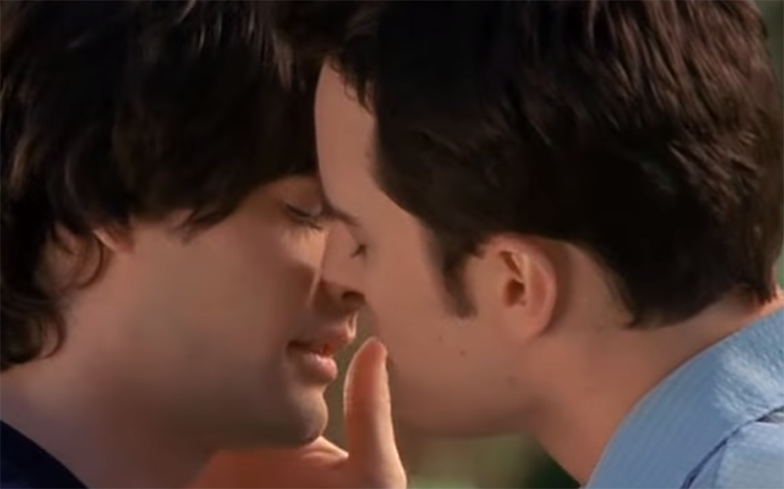
Fan-favourite Dawson’s Creek character Jack McPhee (Kerr Smith) made headlines when he came out in a two-part episode in 1998, and was later part of the first man-on-man kiss on network television in the United States with recurring character, Ethan Brody (Adam Kaufman) in 2000. “We were the first ones to do that. It was a crazy experience back then and look at every single show now, it’s pretty amazing,” Kerr said in a recent interview. “It was an intense experience and I remember calling everybody I respected and said, ‘Hey should I do this?’ Doing the first male-male kiss, I remember it was intense. I’m glad we did it and it was part of history.” Unfortunately, Ethan turned out to be a total tool and dumped Jack for his ex-girlfriend shortly after. It’s safe to say that Jack helped many struggling queer teens come to terms with their identity at a time when queer people received little to zero representation on screen.
David Fisher and Keith Charles – Six Feet Under (2001)

Before he was a forensic blood spatter analyst who led a secret life as a vigilante serial killer on Dexter, Michael C. Hall played one of the most realistic homosexual characters on television. From 2001-2005, the actor starred as David Fisher on HBO’s widely-acclaimed drama Six Feet Under, a socially conservative funeral director who struggles to come to terms with his sexuality. Over the course of five seasons, David learns to find acceptance thanks to his main love interest, Kevin Charles, (Mathew St. Patrick), an openly gay police officer. David and Keith are often credited with helping break down stereotypes about homosexuality and race, and have been lauded as one of the most authentic gay relationships in television history. Later in the series, the two wed and adopt children, becoming one of the first gay families on television. “I felt enormously proud and humbled being charged with playing a character who was unique in the television landscape,” said Hall. “People saying that spending time with the character, seeing that relationship, helped them change their idea of a gay couple, or to have people say the existence of David and his story gave them strength.”
Omar Little and Brandon Wright – The Wire (2002)
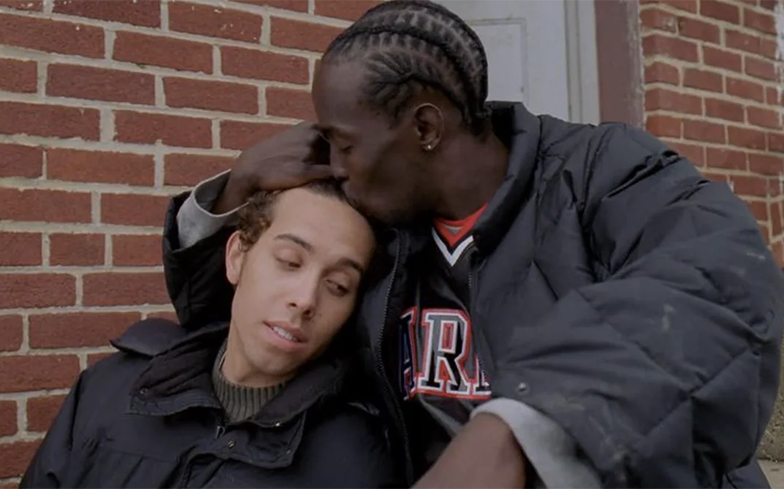
Before The Wire, homosexual characters were often depicted as gay stereotypes: theatrical, camp and overly dramatic. Omar Little (played by Emmy nominee Michael K. Williams) was the rare example of a character that presented the idea that men, especially black men, can be gay and masculine at the same time. In the series, Omar wasn’t at the centre of any torture porn storylines, and by ‘torture porn’ we mean he wasn’t closeted, he didn’t struggle with his sexuality and he didn’t face any uncomfortable coming out scenes with loved ones. Instead, he pursued homosexual relationships without hesitation; three major ones, but it’s his romance with Brandon Wright (Michael Kevin Darnall), a member of Omar’s stick-up crew, that felt revolutionary. The two were affectionate, deeply in love and represented a community that had never been depicted in such a nuanced manner. Also, being queer wasn’t their main character trait. They had their own battles to fight and their sexuality was always shown as secondary to their plight: never the cause of it.
Callie Torres and Arizona Robbins – Grey’s Anatomy (2008)
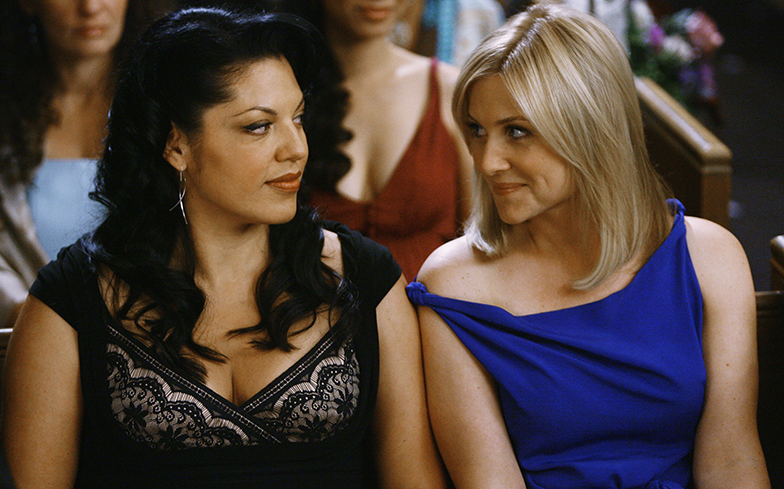
Not only is Grey’s Anatomy the longest-running medical drama of all time, but it’s one of the most inclusive dramas, full stop. Over the course of 16 seasons, the series has included lesbian, gay, bisexual and trans characters, becoming one of the only television shows to represent all four letters of the LGBT acronym. (We can thank series creator Shonda Rimes for that.) The most notable queer characters are, of course, Arizona Robbins (Jessica Capshaw) and Callie Torres (Sara Ramirez), two of the longest-running queer female characters of all time. One of Grey’s Anatomy’s most popular pairings, and the first long-term same-sex couple, the two went to hell and back throughout six seasons; dealing with marriage, infidelity, divorce, a car crash, a plane crash, an amputation and a musical (if you were unaware, this show has a lot of traumatic storylines). Callie and Arizona garnered a rabid fanbase online and have since become one of the most beloved queer television couples. After Capshaw departed the series in the 14th season, she said of Arizona: “She was one of the first members of the LGBTQ community to be represented in a series regular role on network television. Her impact on the world is permanent and forever. Forever.”
Mitchell Pritchett and Cameron Tucker – Modern Family (2009)
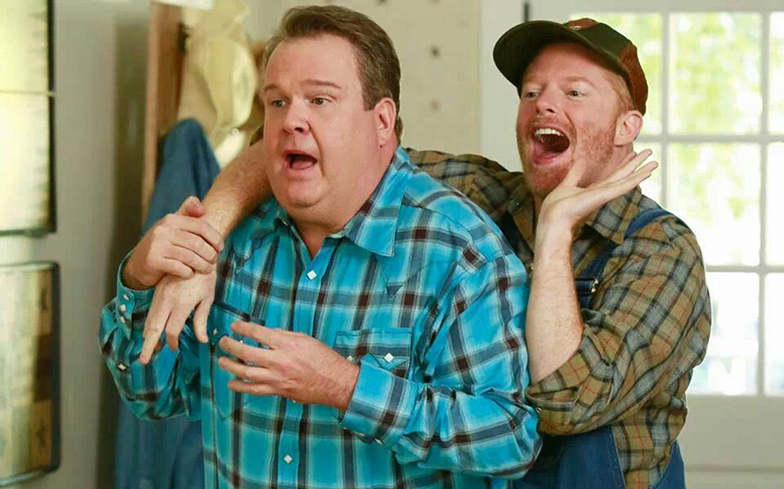
Like Will & Grace, mockumentary sitcom Modern Family has been credited with helping change the perception of gay characters in popular culture. Although the characters of Mitchell (Jesse Tyler Ferguson) and Cameron (Eric Stonestreet) have been critiqued for being ‘stereotypical gays’ due to their flamboyancy (because for some reason, that’s bad), they’ve been lauded by critics as a stepping stone in the fight for marriage equality, which passed in 2015 in the United States during the show’s 7th season. The two also boast the honour of being the longest-running LGBTQ characters in history, having appeared in 250 episodes over 11 seasons, and the longest-running LGBTQ television couple. “They’re fathers, they’re sons, they’re a lawyer and a teacher — they’re also gay, but the series does not lead with that,” Ferguson said of their groundbreaking romance. “That was progressive and bold, even though it shouldn’t be. Modern Family has become a pop-culture touchstone, an easy and safe way to expose audiences to many different relationships in a way that doesn’t feel threatening.” Audiences will have to say their farewells to Mitchell and Cameron later this year, as the series airs its final episode on 8 April.
Sara Lance and Nyssa al Ghul – Arrow (2014)

Arrow has proven to be one of, if not the most inclusive comic book television show on air. Admittedly, the first few seasons were your very run of the mill, heteronormative, superhero-esque fanfare, but as the series progressed, we were introduced to a plethora of queer characters such as the lead character’s son (Ben Lewis) and his ex-girlfriend, Sara Lance (Caity Lotz). She and anti-hero Nyssa al Ghul (Katrina Law) broke new ground for queer representation in the superhero genre when they became the first two LGBTQ characters – and first lesbian couple – in a DC Comics show. “Because Sara Lance is bisexual – something that’s not yet widely portrayed on TV – a lot of girls who are bisexual or lesbian tell me how much it means to them to see someone like her,” Lotz said of Sara, who later became the first LGBTQ hero to headline her own show with Legends of Tomorrow, which was recently renewed for a sixth season. It undeniably paved the way for spin-off series Batwoman with Ruby Rose, the first superhero show led by a lesbian character.
Connor Walsh and Oliver Hampton – How to Get Away with Murder (2015)
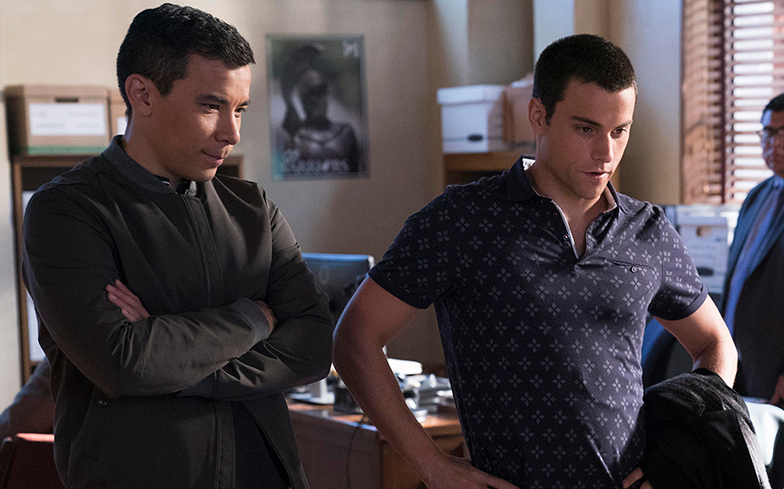
While detective Annalise Keating’s (Viola Davis) courtroom takedowns may have reached iconic status, another reason How To Get Away With Murder deserves your attention is for being one of the very few pieces of mainstream entertainment to bring attention to serodiscordant couples. While the show’s resident heartthrob Connor Walsh (Jack Falahee) was initially introduced to viewers as a character who’d rather browse ‘Humpr’ for sex than get caught up in romance, that all changed when hacker Oliver Hampton (Conrad Ricamora) entered the picture. In the first season finale, the couple agree to get an STD check-up together, where it’s revealed that straight-laced Oliver has tested positive for HIV while Connor has tested negative. The reveal challenged the notion that only people with multiple casual partners can acquire HIV, while the aftermath attempted to educate viewers about preventative measures like PrEP and what it means to live with HIV. “Our show is showing that people are thriving living with HIV, having their [viral load] become undetectable, and adding some levity and lightness to the situation,” actor Conrad said of the storyline. Despite a tumultuous journey so far, the couple recently got married and will (hopefully) get their happy ending when the show comes to a close later this year.
Jamal Lyon and Kai Givens – Empire (2018)
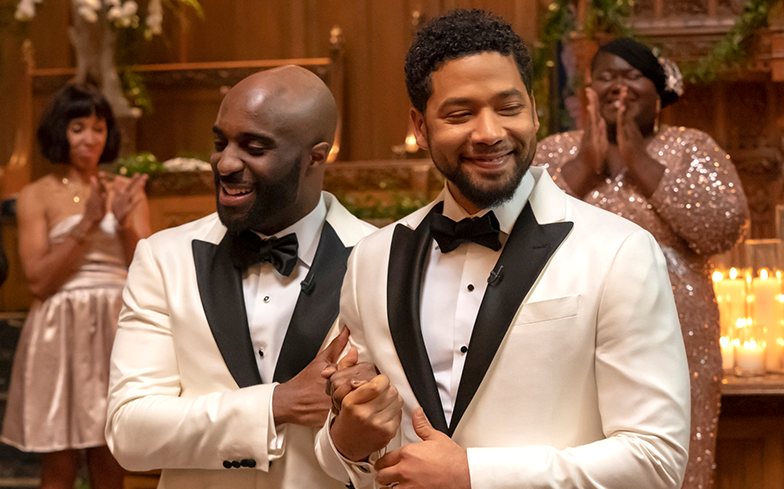
Like The Wire, Fox series Empire made strides for gay African-American men on the little screen. In the show’s fifth season, R&B singer-songwriter Jamal Lyon (Jussie Smollett) ties the knot with Kai Givens (Toby Onwumere), making history as the first wedding between two gay, black men on primetime television. LGBTQ ally and icon Chaka Kahn even made a special guest appearance to sing the universal love track, Love Me Still – it was a moment. “The influence of Empire still extends out well beyond America and it’s culturally relevant and I really appreciate the show for that,” said Onwumere. “In its fifth year, it’s still going — as evidence to the wedding that’s going on, it’s still culturally relevant, so I think it’s beautiful. I really love what Kai and Jamal have.” Unfortunately, the episode marked the final appearance of Jamal and Kai after Smollett was accused of faking a racist and homophobic hate crime. He was ultimately dismissed from the series and his character was written out. The sixth – and final – season addressed his absence, saying Jamal was “was running away from Lyon drama”.
Pray Tell and Ricky Evangelista – Pose (2019)
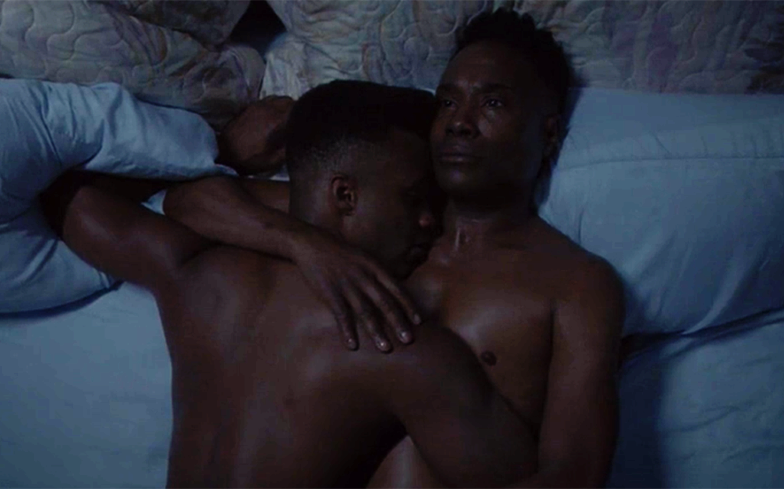
Ryan Murphy, Brad Falchuk and Stephen Canals’ LGBTQ drama Pose has broken new ground for queer representation since its 2017 debut, featuring the largest amount of trans actors in regular roles of any scripted television series in history. In season two, Billy Porter’s character Pray Tell – the show’s resident emcee in the Ball scene – shares an intimate moment with Ricky Evangelisa (Dyllon Burnside) after bonding over their HIV-status, resulting in the first ever sex scene between two black and queer, HIV-positive men. “It was hard for me to watch because it was actually very real. That’s something that’s very private,” said Porter. “It’s a private moment that I feel like I have now cracked open and begun to share in how I tell stories now. I’m excited that people get to see this human being, this archetype, this African American out, gay, powerful man.” Billy Porter later made history (again) as the first openly gay black man to win the Primetime Emmy Award for Best Actor in a Drama Series.
Related: 42 of the best LGBTQ shows you can watch right now on Netflix.
